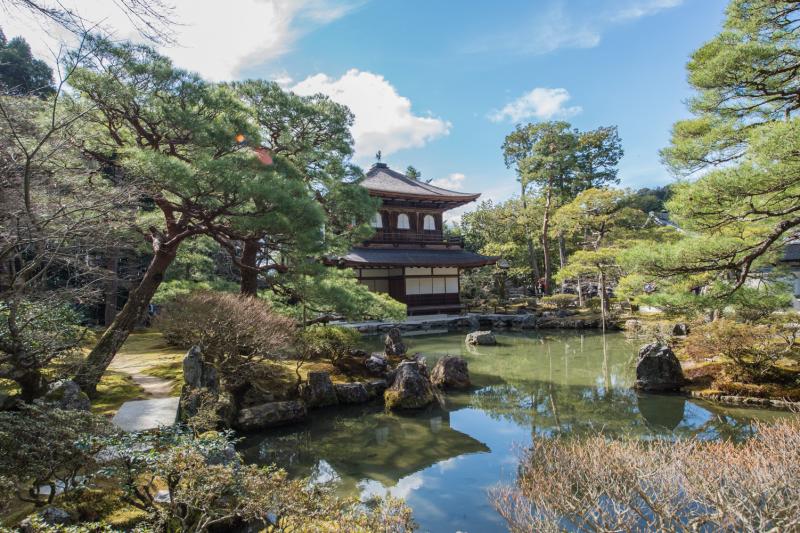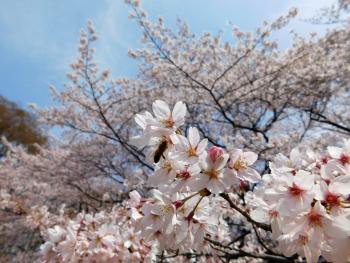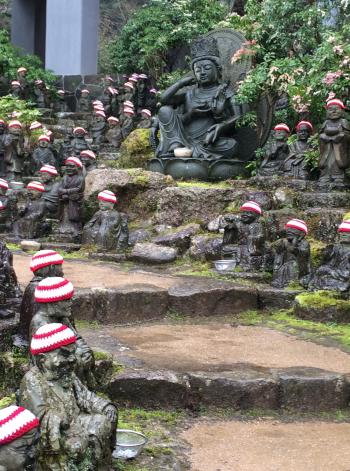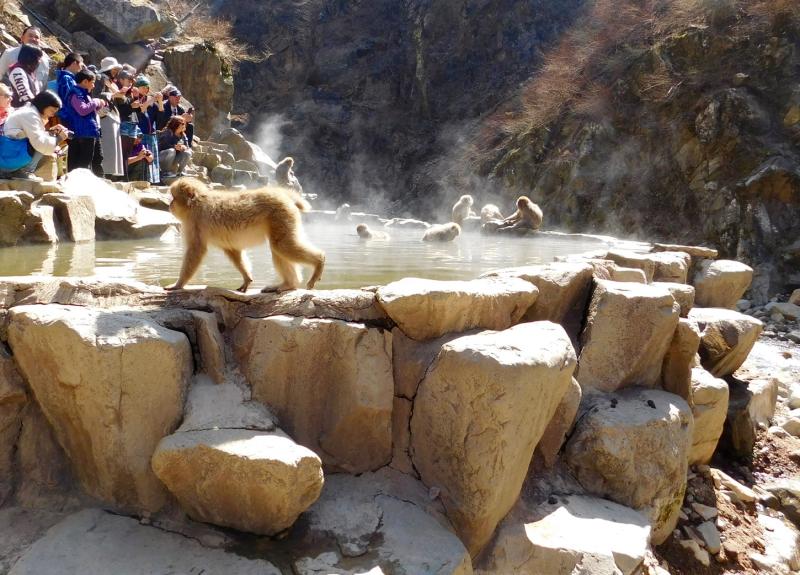Fascinated by the flora and fauna of Japan
This article appears on page 32 of the October 2016 issue.
My friend and I departed San Francisco International Airport on March 15, 2016, so excited to be finally going to Japan, a trip we had been planning for about a year. During our planning, we discovered that few people we knew had been to this wonderful country.
We chose a tour from World Untouched (Anchorage, AK; 855/527-7626, worlduntouched.com), a new company started by Justin Gibson, a guide we had traveled with before. We had gone with him to see the polar bears in Churchill, Canada, and the northern lights in Fairbanks, Alaska. He was knowledgeable and provided interesting stories that made those trips with him the best. We knew this trip would be great.
Hiroshima
After making the decision to go on the 10-day, all-inclusive “Cherry Blossoms and Snow Monkeys” tour ($9,999 per person, double), we realized that we wanted to see Hiroshima on our own at the beginning of our trip and spend a few extra days in Tokyo before going home. This would bring our trip to 17 days and add $1,500 each to our trip cost.
Arriving in Tokyo, we immediately transferred to the national terminal for our flight to Hiroshima. The transfer was easy, thanks to the helpfulness of the airport staff and clear signs in English.
Leaving Haneda Airport and looking out over the mountains around Tokyo, we were thrilled to see Mt. Fuji’s snow-covered peak glistening in the sun. It was then we knew we were in Japan. It was the only time we would see that famous landmark, however.
Upon arriving in Hiroshima, we found our way from the airport by bus, train and taxi. (We had arrived on a holiday and the airport bus was not running.) The people at the small airport helped us get our tickets and showed how to get to the Oriental Hotel Hiroshima (10 Tanaka-machi Naka-ku).
The distance from our hotel to The Peace Memorial Park was about a mile, and Hiroshima Castle was just a little farther than that — easy walks.
Miyajima Island, a UNESCO World Heritage Site, was the first place we wanted to visit, so after a comfortable overnight, we took a taxi to Hiroshima Station, where we found the train that would take us to the ferry to the island. The tour desk staff at the station was very helpful.
We found it important to give each taxi driver we hired a piece of paper with the address of our destination on it and, on the return, one that showed the hotel’s address.
After an hour-long ride by train and ferry, we arrived at the island and began our visit, renting electronic devices ($15 each) for a self-guided tour.
Our first stop was the famous torii gate, which at high tide seems to float on the water, and the Itsukushima Shrine, first built in the sixth century. (The current buildings are from the 16th century.) Fortunately, it was a slightly rainy day — the only one of the whole trip — so there were not many visitors on the island.
We then went uphill to Daisho-in, an important temple of Shingon Buddhism located at the foot of Mt. Misen.
To reach the temple and its 1,000 statues of Fudo Myo-o, a deity important in Japanese Buddhism, you can follow the central walk up many steps and past prayer wheels, or you can take the path to the right, which is not so steep. We chose the path, which led us to a belfry where visitors can ring the huge bell that is rung every day at 10 a.m. to announce the Goma Ritual of burning wooden sticks on which prayers are inscribed.
After visiting the temple, we toured the wooded grounds and enjoyed some good local food. It was a wonderful, peaceful way to start our trip.
Memorable sights
The next day, we walked to Peace Memorial Park, where we were struck by the beauty of the memorials and the grounds. The 8:15 Memorial Clock represents the time the nuclear bomb exploded in Hiroshima, causing mass destruction. A dome of one of the original buildings and a few trees remain.
It is important to visit all the memorials and the museum to understand the whole story. The Children’s Peace Monument, with its flying crane and thousands of colorful paper cranes, was particularly beautiful.
The museum included many pictures of the devastation and a video of survivors relating their stories. My friend and I were very moved by the whole experience.
Our last day in Hiroshima provided us with the opportunity to visit Hiroshima Castle and walk around the town’s huge covered mall and its quaint streets.
On the castle grounds, we watched some young men practicing their samurai skills.
The walk to the castle around its huge moat was interesting. Arriving at the castle, we discovered a climb of over 100 steps was required to reach the top, but it was easier than it sounded. Every floor had a display of samurai artifacts that provided a reason to take a short rest.
When we reached the top, we stepped out onto the portico for a view of the entire city.
As our first stop in Japan, Hiroshima provided us with a good introduction to the country’s language, culture and people.
Osaka’s sights
Our next adventure was to figure out how to validate our Japan Rail Passes so we could take the bullet train to Osaka. After a short taxi ride (about $7), we arrived at Hiroshima Station, entering through the taxi stand entrance. We found that signs were written in English and Japanese.
Again, a nice lady at the tourism desk pointed us to the Japan Rail office, where we quickly validated our passes and purchased unreserved seats to Osaka. (No reserved seats were available, but these seats were very comfortable.)
Passport identification as well as a ticket is needed to get through the turnstile to the boarding platforms, and you will be asked to show them again when exiting the train area.
We easily found our way to the track where our train was waiting. The unreserved section had few passengers, so we boarded and were soon on our way.
We packed light for this trip, as we knew we had to manage our own bags when we were on our own — a very smart way to travel, always.
In about an hour, we arrived in Osaka and found a taxi to deliver us to Hotel New Otani, located across the river from the Osaka-jo Hall and Osaka Castle. In Japan, taxis at all stands pick up passengers at the beginning of the line. It is not okay to cut into the line. There are plenty of taxis, so the wait is usually short.
We were immediately met at the hotel by one of our tour guides, and we waited a little for the other members of our group to arrive. Justin soon came in and checked us all into the hotel. Our rooms were large, comfortable and well appointed, including showers with lots of hot water. After many months of water rationing in California, this was a real treat.
In the afternoon, we wandered across the river to visit the castle gardens, where we enjoyed watching the people spending a nice afternoon there. The cherry trees were just starting to blossom.
Inside the grounds, there were artifacts from the houses of the samurai and those who worked for them. A visit to the castle is a must for those wanting to understand the days of the samurai.
Notable meals
The group’s first dinner together was in a small restaurant in the Korean section of town. A Korean barbecue was cooked at the table, with Kobe beef and vegetables perfectly prepared.
The dining room had two low tables with a barbecue built into each one, and we sat on pads with our feet dangling through a hole cut in the floor.
In all of Japan, shoes are removed upon entering a restaurant, home or temple, and slippers are provided. Velcro-type closures on your shoes are a lot easier to handle than laces when your hands are cold.
Travelers to Japan must be able to get themselves up from the floor, although a helping hand is usually available.
Our group included a family from Morocco; my friend and me; Justin; Tekuya, our Japanese guide; Phillip, a Chinese tour guide and Buddhist expert, and Rico, our baggage and train-ticket manager.
Our second night’s dinner was at Aoki, a Michelin-starred restaurant. This was a beautiful dining experience that included sushi, miso soup, Japanese pickles and several other courses. The chef cooked each course right in front of us, then served the delicacies in exquisite, small dishes.
The menu was created after the chef went to the market for the freshest fish, vegetables and fruit. He even went to the hills to a spring to get the water for cooking the rice.
After finishing our 3-hour dinner, we went to Osaka’s night entertainment area, where the Japanese go to eat street food and have a great time, sometimes all night. The lines were very long at the places that served octopus, a specialty in Osaka. Everything looked good, but we were still too full.
Koyasan
In the morning, we boarded a train headed toward Koyasan. In a little more than an hour, we connected with a cable car for a picturesque but steep ride up the mountain to Koyasan, the center of Shingon Buddhism.
The area includes a number of temples dating from 861, many of which serve as ryokans, or inns. We stayed at the Koyasan Onsen Fukuchi-in, which has an onsen, or Japanese bath, outside as well as a public bath and sauna inside. It was too cold to go outside, but inside was wonderful.
The beds were mats with down comforters on the tatami-covered floor. Hot tea was always available in the rooms.
This onsen was an active Buddhist temple, so our meals were vegetarian. They were filling and tasty. For early-morning risers, joining the monks at early-morning prayers was a special experience.
In Koyasan, the cemetery leading up to the Okunoin Temple was a moving, magical place. There were thousands of monuments and shrines nestled among huge cedar trees.
After a quiet walk of about a mile, stopping to view the monuments, we reached the sacred bridge and then the temple, where talk and food are prohibited. As we stepped into the temple, the morning sun radiated through a large window that offered a view of the blue sky and huge trees outside.
The monks were chanting prayers and making food for the Kobo Daishi, or Kukai, the founder of Shingon Buddhism. The Kukai is considered not to be dead but in eternal meditation.
The ceiling of the temple was covered with 10,000 beautiful lanterns donated by worshipers dating back to early times. They have been lit since the beginning.
After leaving the temple, a short walk around the back led us to the stairs to the basement, where many icons similar to the ones at the temple on Miyajima Island were displayed. This UNESCO World Heritage Site is not to be missed.
After a bit more touring, we returned to Kyoto by train. Rico and Phillip took the luggage to our hotel, and we walked up the hill to the Silver Pavilion. Along the way, we sampled the street fare; the best treats were the matcha-tea frozen yogurt and matcha-cream-filled buns.
The evening featured a geisha show and dinner. Two young maikos (in training to be geishas) danced so gracefully in their white makeup and beautiful kimonos. During the show we were served a good dinner, then the maikos entertained us with games and visited the tables to talk to the guests.
Cherry blossoms and snow monkeys
We got up early the next day to visit the wonderful Bamboo Forest. A full morning of wandering through the forest afforded us stunning views of cherry trees in bloom all over the mountain — another “Wow!” moment in Japan.
I wished we had more time in Kyoto, but we had to get to the monkeys before the weather got too warm and they disappeared into the hills.
We took an early-morning train, the first of three that would take us to the beautiful onsen hotel in Yamanouchi, Nagano Prefecture. This is the gateway to the Jigokudani Yaen-Koen, the park where the Japanese macaque monkeys enjoy the hot springs. We left our bags at our hotel and hiked up to an older onsen in the park.
Shortly, the monkeys began to appear on the hillsides and on buildings, though not in our onsen. If you’re lucky, the monkeys will visit the area and take a dip in the onsen’s outdoor pool, where you might be enjoying a morning dip as well. If not, a short hike up the trail will take you to the visitors’ area that includes a large pool where the monkeys congregate every day.
They were great fun to watch as they cavorted all over the hillside and in the pool. Visitors are asked not to approach the monkeys or try to take a “selfie” with them, as they can be dangerous.
The food at the inn was good, and it was a great place to meet other travelers from around the world, even though the accommodations were a bit “rustic.” Expect to sleep on the floor on a pad, and you have to go down the hall to the bathroom.
We watched the monkeys a long time before collecting our overnight bags and trekking back down to our hotel in town. A matcha frozen yogurt on the way was a great treat.
That evening, dressed in beautiful kimonos provided by the hotel, we enjoyed another wonderful on-site dinner.
To Tokyo
The next day, our group took the bullet train to Tokyo for our last days in Japan. I didn’t think this very big city could be more interesting or beautiful than the places we had seen on our trip so far. How wrong I was!
We were so lucky to reach Tokyo and find the cherry trees in full bloom. Everywhere we looked, a cherry tree was blooming in glorious pink. Stunning!
To celebrate our last night together, our group walked to a sukiyaki restaurant.
Thin slices of Kobe beef were cooked on a grill at our table until sizzling hot. We each had a bowl and a raw egg at our place. We cracked the raw egg into the bowl and stirred it up. Then the chef put the beef into our bowl, the hot beef cooking the egg, creating a sauce.
Meanwhile, the chef cooked vegetables and added them to our bowls — so good!
Our guides gave us each a tea ceremony bowl, matcha tea, a bamboo spoon and a whisk as mementos of our trip. What a special ending to our tour!
Winding down
The next morning my friend and I were on our own.
Before leaving the busiest part of Tokyo, we walked to Yoyogi Park, which was filled with huge old cherry trees in full bloom. We then walked over to the Shinto Meiji Shrine, passing through a wooded area with original wooden torii gates. We never tired of seeing another shrine or temple.
Justin and Rico helped us get our bags from our downtown hotel and put us in a taxi to the Tokyo Marriott Hotel, where we stayed for the next two days. This was the only standard American hotel we stayed in during our trip. The people there were nice and helpful, but the amenities in the Japanese hotels were far superior.
We enjoyed this area, especially the old samurai street near the hotel. There were small shops and many temples that could be found down short alleyways. A small kimono shop and a gift shop offering locally made items, rather than products made in China and India, helped us spend the last of our yen.
After two days of just being immersed in the culture of Tokyo, we headed by taxi to Haneda Airport for a 9-hour flight back to San Francisco.
Every day of our trip was a new and wonderful experience. Every meal was a taste sensation.
I was able to do the 6- to 8-mile “trek” every day and ate such healthy food that I returned home in better shape than when I left.
I have traveled all over the world, but Japan was the cleanest and friendliest country I have been in. Even though I could not read the writing or speak much of the language, a smile and a ‘Thank you’ were all that were needed to get help.
Would I go again? In a heartbeat!




